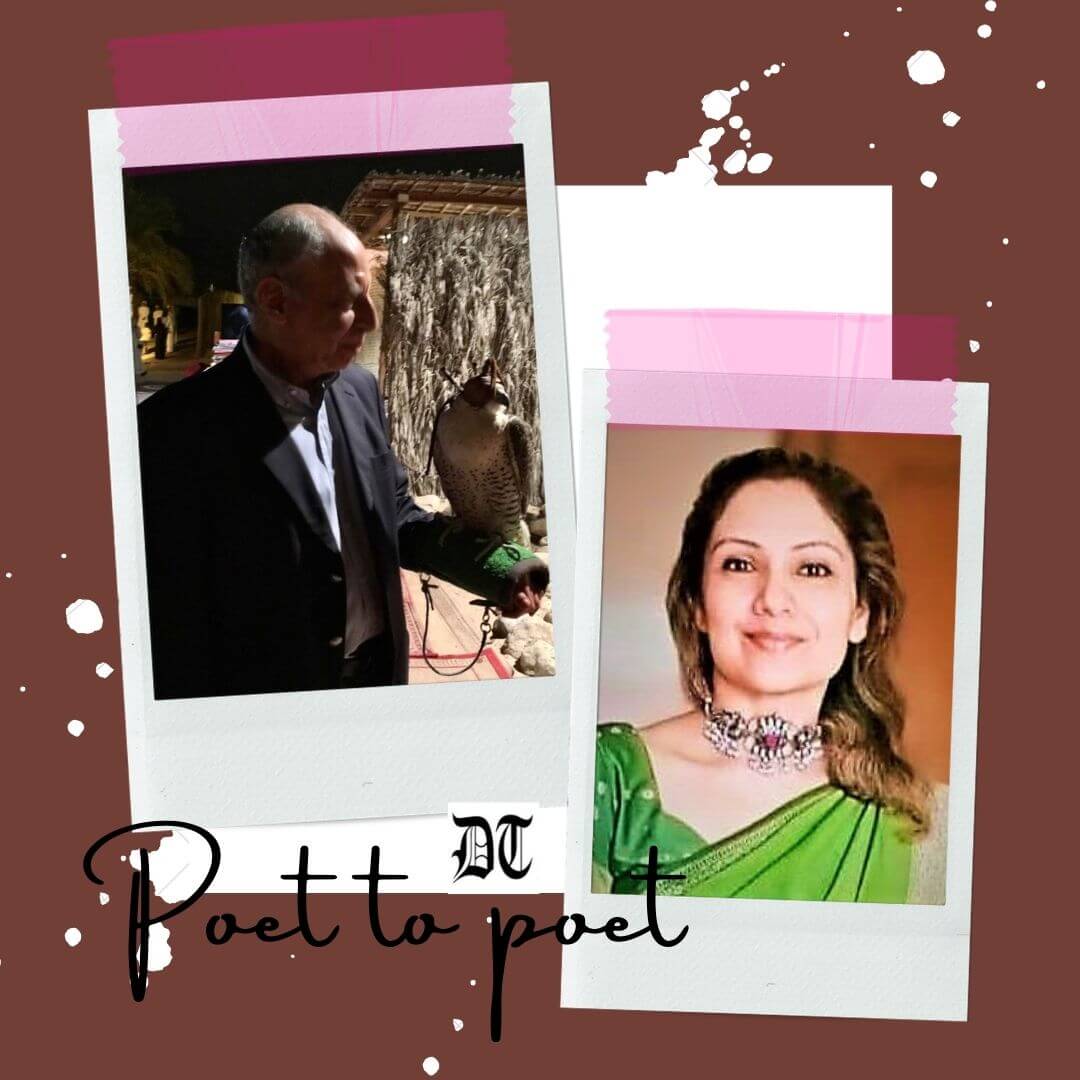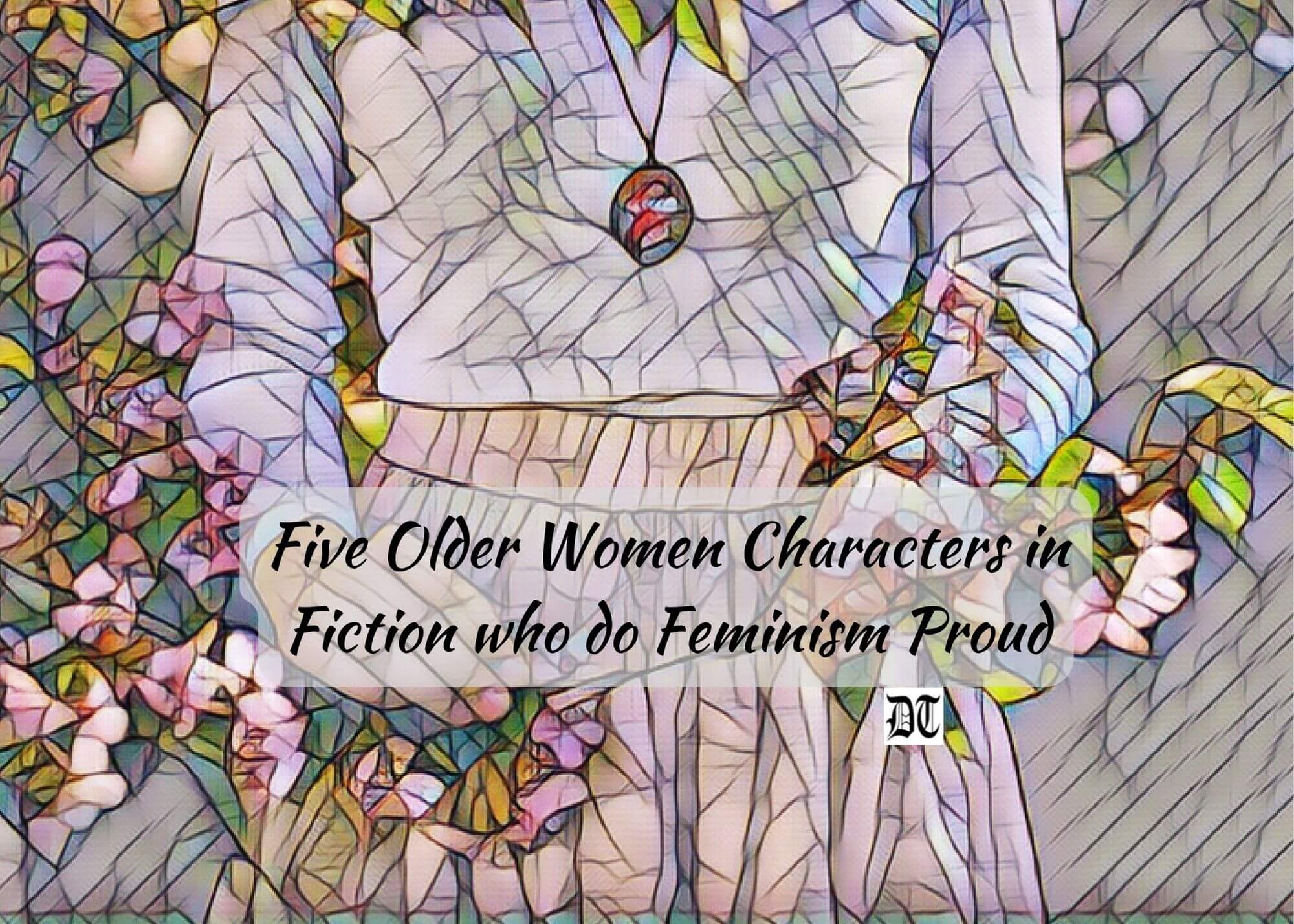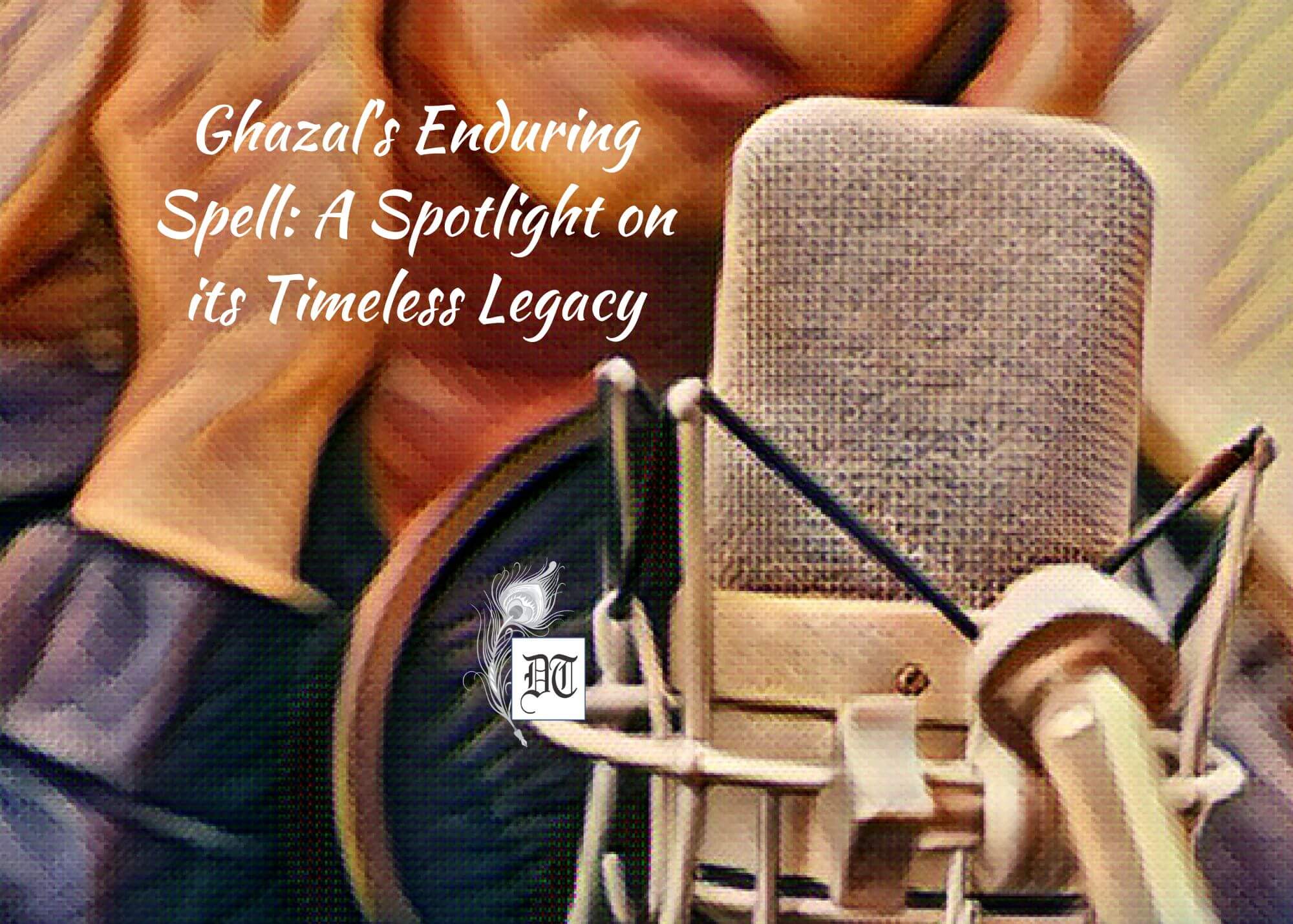In the acclaimed novel, Tamas, Bhisham Sahni shows how these two identities are made hostile to each other by the political ambition of some power-loving people, the colonial rulers’ ‘divide and rule India policy’ and Hindu brands of religious fundamentalism. These three disruptive forces bring the two identities at war and thus create a crisis of identity of both Hindus and Muslims in pre-partitioned India. Here’s an erudite critique by Basudeb, in the weekly column, exclusively in Different Truths.
Bhisham Sahni’s Tamas, winner of the Sahitya Akademi Award, in 1975, was originally written in Hindi and later translated into English by the author himself.
The novel faithfully records how different forces have flared up the tensed relationship between Hindus and Muslims already existing during the time of Indian partition in 1947. The novel delineates some facts of history. Sudha Sundaram’s comment in this context is relevant:
Tamas is a brilliant novel because Sahni demonstrates that the Indians are historically conscious only of religious differences and not their fundamental unity….Racially, the Indians, whether Hindus or Muslims, are one. . . . The Indians, in whose memories history and myth are so often blurred, have only observed the difference. This point is made tellingly by Sahni. It is also an appropriate point, considering that the subject is Partition.1, p 35 (The Literary Criterion)
 My purpose in referring to this comment above is to underscore that the narratives of the novel, Tamas, presupposes at the very beginning the existence of the two separate identities in pre-partitioned India — one of Hindus and another of Muslims. Bhisham Sahni shows how these two identities are made hostile to each other by the political ambition of some power-loving people, the colonial rulers’ ‘divide and rule India policy’ and Hindu brands of religious fundamentalism. These three disruptive forces bring the two identities at war and thus create a crisis of identity of both Hindus and Muslims in pre-partitioned India. Racially, Hindus and Muslims in India are of the same stock. The difference between Hindus and Muslims is only of religion. If we accept the hypothesis that Hindus first come to the Indus from Central Asia and Muslims from the same region in a much later period, we will find that they are of same anthropological origin. Indian Muslims are mostly converted to Islam. Muslim rulers of Central Asia invade India, establish their rule here, and then convert Hindus to Islam by force. Moreover, in the course of centuries, they all become Indians. By Indian culture, we mean contributions of both Hindus and Muslims. Indian culture is a composite one. It is a synthesis of various cultures and traditions. The only difference between Hindus and Muslims is the difference of religion; the difference is not the difference in art, music, architecture, aesthetics, food habits, and so on.
My purpose in referring to this comment above is to underscore that the narratives of the novel, Tamas, presupposes at the very beginning the existence of the two separate identities in pre-partitioned India — one of Hindus and another of Muslims. Bhisham Sahni shows how these two identities are made hostile to each other by the political ambition of some power-loving people, the colonial rulers’ ‘divide and rule India policy’ and Hindu brands of religious fundamentalism. These three disruptive forces bring the two identities at war and thus create a crisis of identity of both Hindus and Muslims in pre-partitioned India. Racially, Hindus and Muslims in India are of the same stock. The difference between Hindus and Muslims is only of religion. If we accept the hypothesis that Hindus first come to the Indus from Central Asia and Muslims from the same region in a much later period, we will find that they are of same anthropological origin. Indian Muslims are mostly converted to Islam. Muslim rulers of Central Asia invade India, establish their rule here, and then convert Hindus to Islam by force. Moreover, in the course of centuries, they all become Indians. By Indian culture, we mean contributions of both Hindus and Muslims. Indian culture is a composite one. It is a synthesis of various cultures and traditions. The only difference between Hindus and Muslims is the difference of religion; the difference is not the difference in art, music, architecture, aesthetics, food habits, and so on.
A careful examination of the conversation between Richard, the District Deputy Commissioner, and his wife, Liza, in Tamas shows that both Hindus and Muslims are of the same racial stock. Liza who comes from England fails to distinguish between a Hindu and a Muslim. She asks her husband this. It is not possible for Liza to identify a person either as a Hindu or as a Muslim. Their looks are identical; their features are same. The only reason of similarity is that they are of the same race. Another piece of conversation between Richard and his wife establishes that both Hindus and Muslims are of the same racial stock:
“‘The inhabitants of this area too have been living here since times immemorial. Have you noticed their features? A broad forehead, brownish tint in the colour of their eyes. They all belong to the same racial stock.’
‘How can they be of the same racial stock, Richard, when invaders from all over, as you say, have been here?’…
The first wave of migrants who came from Central Asia three or four thousand year ago and the bands of invaders who came two thousand years or so later, both belonged to the same racial stock. The former were known as Aryans and the latter Muslims. But both had the same roots.’
The people here too must know all this. ‘These people know only what we tell them…..’Most people have no knowledge of their history. They only live it.” (Tamas, p.207)
Both Hindus and Muslims are of the same anthropological stock. The crisis of identity that exists between the two communities is of religious identities. Political leaders like Jinnah or Veer Savarkar or Lala Lajpat Rai and colonial rulers in India manipulate this religious identity for their personal and political gains. Mohammed Ali Jinnah’s two-nation theory addressed at the Muslim League conference, at Lahore, in 1940, and Hindu Mahasava’s slogan, ‘India for Hindus only’, evince the fact that these two concepts hit hard the reality of the pluralistic fabric of the Indian society. The reflection of this manipulation of the religious difference between the two communities living together in peace and harmony for centuries is  conspicuous in Tamas.
conspicuous in Tamas.
The novel at the beginning introduces pig-slaughter episode. Nathu lives from hand to mouth. He flays animals and cleans hides. This is his profession. Murad Ali, a local Muslim politician meets Nathu and asks him to kill a pig. He tells Nathu that the veterinary surgeon is in need of a slaughtered pig for his experiment. Furthermore, he tempts him saying that he will pay him five rupees for the job. It is a big money for Nathu. At first, Nathu hesitates to do this because he never kills any pig. Moreover, he knows that pig slaughter is a sensitive issue in that Muslim-dominated locality. Murad Ali is also an influential person in the area. He is well connected with the municipal committee. Almost every day a cow or a horse or a buffalo dies somewhere within the jurisdiction of the municipal area, Murad Ali gets Nathu for skinning those animals. Murad Ali gets the money from the municipality. Nathu gets only the hide. This is the deal between Murad Ali and Nathu. It is very difficult for Nathu to ignore Murad Ali’s demand. If he does, he will simply invite Murad Ali’s rage and thus will get no animal skinning job from him. Even Murad Ali will evict him from the place where he with his family live for years together.
Finally, Nathu accomplishes this job of his distaste. According to Murad Ali’s instructions, Nathu leaves the carcass of the pig at the pushcart before the daybreak. Let us refer to what Bhisham Sahni comments in this context:
Where would the pushcart be at this time, the thought suddenly crossed Nathu’s mind. In which direction would it be going? . . . It might have already entered the cantonment, it might be at that very moment standing right at the gate of the veterinary hospital. To hell with it – Nathu uttered a swear-word. What did the veterinary surgeon need a pig for? It must have been to sell its meat somewhere. The thought of what he had gone through made him shiver, what with the stench in that stuffy room, the sweat, the grunts of the wretched creature which had licked his shins so hard that the skin had come off. To hell with Murad Ali. Nathu would wander wherever he liked. He put his hand on his pocket and felt the rustle of the five-rupee note. ‘What do I care? It is my well-earned money.’ (Tamas, pp.198-99)
Nathu anticipates something ominous. Nevertheless, he is so frightened that he does not spell that out even to himself. He has only some faint ideas about what is going to take place in the next morning. When the day breaks, it is seen that carcass of the pig lies at the entrance of the mosque. ‘Something blackish, like a bundle seems to be lying there.’ To a Mussalman, pig is the most unholy creature. This event totally changes the communal relationship between Hindus and Muslims in that town. The corollary of this event is the astringent animosity between the two communities. A reference to the following conversation between a group of Congress Party and a group of the Muslim League, intersected by the authorial comment is relevant to the present context:
Both groups stood facing each other. They talked like friends, and they also exchanged diatribes. ‘See for yourself,’ Bakshiji said. ‘In our group there are Sikhs, Hindus Muslims. There stands Aziz. Here is Hakimji.’
‘Aziz and Hakim are the dogs of the Hindus’…. He said it with such vehemence that both the Muslims members of the Congress looked crestfallen.
‘Is Maulana Azad a Hindu or a Muslim?”
‘Maulana Azad is the biggest dog of the Hindus who goes wagging his tail before you.’
The elderly man continued to listen patiently.
‘Freedom of Hindustan will be for the Hindus. It is in sovereign Pakistan alone that Muslims will be really free . . . . But when the group of Congressmen moved forward, resuming their prabhat pheri, the man with the Turkish cap blocked their way: ‘Muslims reside in this street. You can’t go there.’
‘Why can’t go there? You go raising slogans for Pakistan all over the town without let or hindrance, while here we are only singing patriotic songs.’ (Tamas, pp.201-02)
The conversation between the leaders of two groups suggests how hostile Muslims are to their Hindu counterparts. Muslims believe their freedom is only in the formation of a separate land for them in India. Pakistan is their only dream. The Muslim leader uses the ‘Turkish cap’ to assert that they are different from Hindus. This idea also comes from their problems of Muslim identity. The Muslim leader’s observation on Aziz, Hakimji and Maulana Azad, i.e., they wage their tails to the Hindus, shows how they feel what Hindus are and what they are. This crisis of Muslim identity results in the birth of the concept of sub-nationalism, i.e., Muslim nationalism. Muslim nationalism is perhaps the concrete manifestation of the crisis of Muslim identity in pre-partitioned India. When the town is torn by riots, leaders of all political parties decide to convene a meeting to establish peace. Dev Datt, who makes contacts with people of different strata of the society is one of those leaders. An authorial comment on the deliberation in the meeting of leaders of different political parties is interesting in this context:
At the meeting there was angry exchange of words and accusations. For a full half hour, Hayat Baksh kept insisting that Bakshiji must first declare that he had come as a representative of the Hindus and that the congress was a party of the Hindus (Tamas, p.322)
This is the mindset of Muslim leaders. The Muslim leaders believe that the Congress party is for Hindus and the Muslim League for Muslims. This political conviction is that Hindustan is for Hindus and Pakistan for Muslims stands on the fact that Indians are polarized by religion. Neither Muslim nationalism nor Hindu nationalism is free from religion. Another example of how the crisis of Muslim identity or the concept of Muslim nationalism is related with the religion is the episode of Iqbal Singh’s conversion into Islam in Tamas. During the time of the partition riot, a group of Muslim rioters in the countryside finds a young Sikh who runs for his life ‘near a small mound’. Finally, Iqbal Singh surrenders himself to the rioting mob and the rioters then ask him either to recite theKalma or to invite his death. Iqbal Singh standing on the verge of death says that he will convert himself to Islam by reciting the Kalma. The authorial narration of this event is significant:
Just then the mullah of the mosque arrived, along with an elderly man of the village. The elderly man snubbed Nur Din for being flippant on a pious occasion:
‘Get up. You are pestering someone who will soon be our co-religionist, one who is going to accept our faith.’
With the arrival of the elderly man, the entire scene changed. People stepped back and became quiet. Iqbal Singh was given support to stand up. One man brought in a cot and Iqbal Singh was seated on it. The rest of the ceremony was conducted with care and attention. Rosary in hand the mullah made Iqbal Singh recite Kalma: ‘La Ilah Illallah! Muhammad ar Rasulallah!’
The Kalma was recited three times. People standing around touched their eyes with the tips of their fingers and then kissed them. Thereafter, nearly everyone in the crowd embraced Iqbal Singh one by one. (Tamas, p.395)
By introducing this episode of Iqbal Singh’s conversion into Islam, Bhisham Sahni shows how the crisis of Muslim identity or the concept of Muslim sub-nationalism associates itself with the religion of Islam. The deep-rooted religious conviction of Muslims is that the conversion of Hindus or Sikhs into Islam is a mark of the victory in affirming their identity.
https://www.youtube.com/watch?v=NyxsPkiMqGE
Introduce pig-slaughter episode only to show how the political leader like Murad Ali engineers an organised conspiracy against the Hindu-Muslim communal harmony for their personal benefit during the time of Indian partition. Murad Ali instigates poverty-stricken innocent Nathu to kill a pig and its carcass is thrown in front of the mosque according to his master plan. The fire of communal disharmony spreads in the town within a couple of hours. Murad Ali the mastermind of the riot between Hindus and Muslims is now a leader. The author towards the end of the novel narrates how Murad Ali benefits himself by the menacing communal violence he conspires:
The bus for Peace stood there in all its glory, pink and white stripes painted on it. On the roof of the bus, at both ends, facing the road, fluttered the flags of the Congress and the Muslim League….
‘Peace Committee Zindabad!’
‘Hindus and Muslims are one!’
The bystanders peered into the bus to see who it was that was raising the slogans. On the seat next to that of the driver sat a man, holding a microphone in his hand. Many did not recognize him but some did. Nathu was dead, or he would have recognized him at once. It was Murad Ali, the dark-complexioned Murad Ali, with bristling moustaches, his thin cane lying between his legs, peering to the right and left with his small ferrety eyes and raising slogans with all the passion at his command. (Tamas, p.451)
The irony of the communal harmony between Hindus and Muslims is that a conspirator like Murad Ali gives slogan, ‘Long Live Hindu-Muslim Unity!’ or ‘Peace Committee Zindabad!’ Partition movement becomes one of the tools of some political leaders for the fulfillment of their personal ambitions of their lives.
Works Cited
Primary Source:
Bhisam Sahani, “Tamas”, Memories of Madness: Stories if 1947. New Delhi: Penguin Books, 2002.
- Sudha Sundaram, “Partition in Historical Fiction”, The Literary Criterion, ed. C .D. Narasimhaiah, Vol. XXV, No. 1, 1990.
©Basudeb Chakraborti
Photo from the internet.
#Tamas #BhisamSahani #Literature #MakingOfLiterature #HinduMuslim #PartisionOfIndia #DifferentTruths




 By
By
 By
By
